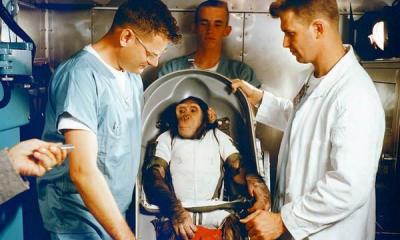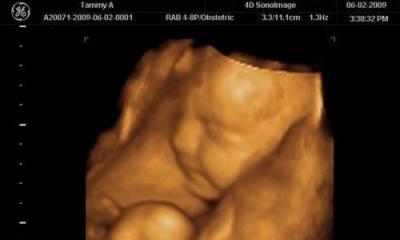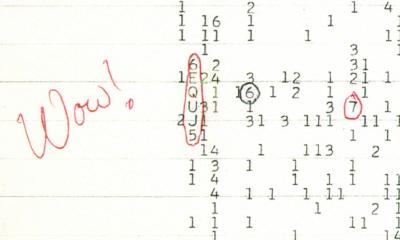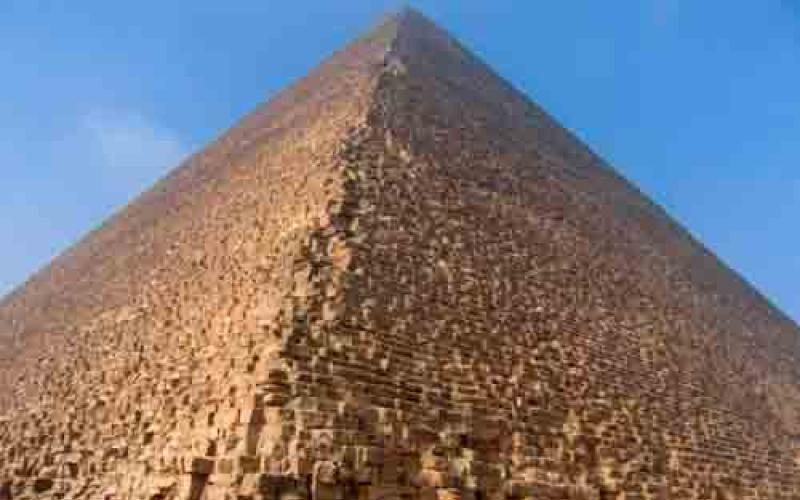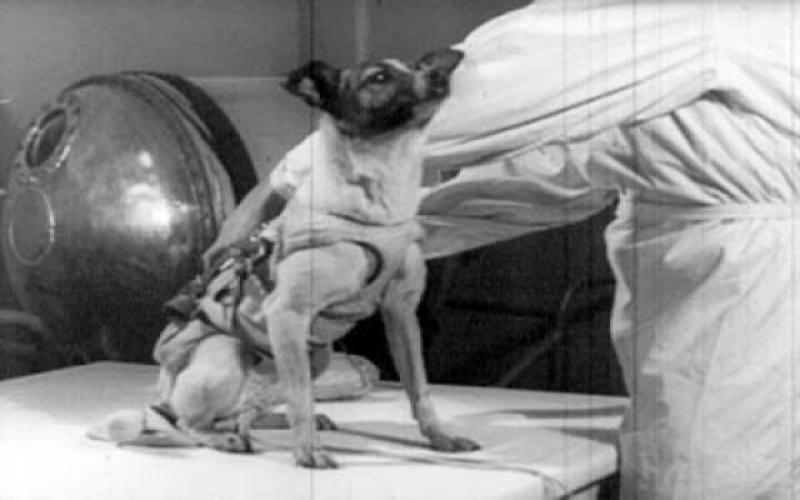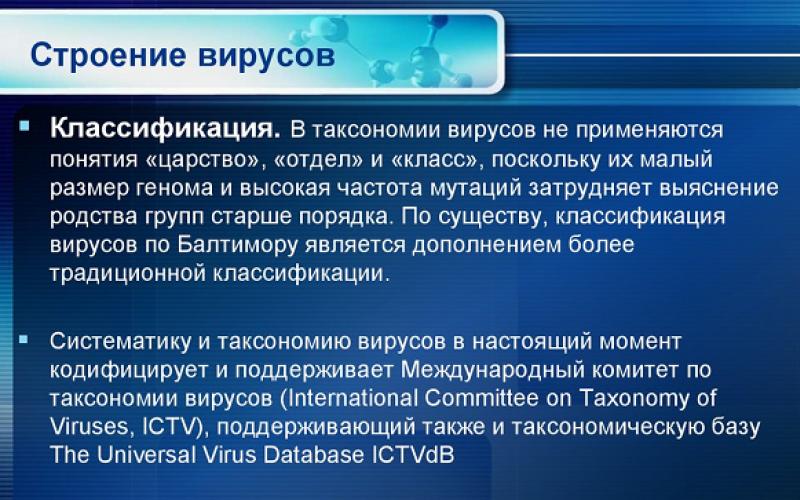Big Dipper
Big Dipper\ Ursa Major is a constellation in the northern hemisphere of the sky. The seven stars of Ursa Major make up a figure resembling a ladle with a handle. The two brightest stars, Aliot and Dubhe, have magnitudes of 1.8 apparent magnitudes. According to the two extreme stars of this figure (α and β), you can find the Polar Star. The best visibility conditions are in March-April. It can be seen throughout Russia all year round (with the exception of the autumn months in the south of Russia, when the Big Dipper descends low to the horizon). The number of stars brighter than 6.0m is 125.
First classification - Yerk classification with allowance for luminosity (MCC). An additional factor affecting the shape of the spectrum is the density of the outer layers of the star, which in turn depends on its mass and density, that is, ultimately, on the luminosity. SrII, BaII, FeII, TiII depend especially strongly on the luminosity, which leads to a difference in the spectra of giant stars and dwarfs of the same Harvard spectral types. The dependence of the type of spectrum on luminosity is reflected in the newer Yerkes classification developed at the Yerkes Observatory by W. Morgan, F. Keenan and E. Kelman, also called the ICC after the initials of its authors. In accordance with this classification, the star is assigned the Harvard spectral type and luminosity class: 
Second classification - Basic (Harvard) spectral classification, developed at the Harvard Observatory in 1890-1924, is a temperature classification based on the shape and relative intensity of absorption and emission lines in the spectra of stars. Within a class, stars are divided into subclasses from 0 (hottest) to 9 (coldest). The Sun has a spectral type of G2 and an equivalent photosphere temperature of 5780 K.
Stars of the constellation Ursa Major
Aliot\ Epsilon Ursa Major (ε Ursae Majoris) is the brightest star in the constellation. It is located on the 33rd place in brightness among all the stars in the visible part of the sky. Alioth is located at a distance of 80.84 light years from Earth. The star - A0pCr - is a white variable star of the type α² Canis Hounds. It has a strong magnetic field (100 times stronger than Earth's) that splits the different elements of the star's hydrogen fuel, then the angle of the spin axis to the magnetic field axis combines the various elements, sorted by magnetic properties, into a single line visible between Alioth and Earth. The elements react differently with different frequencies of light, refracting it, which is why Aliot has extremely strange spectral lines that fluctuate with a period of 5.1 days. In the case of Aliot, the axes of rotation and the magnetic field are at an angle of almost 90 degrees to each other. The temperature of the star is 9400K.
Dubhe(α Ursae Majoris) is the second brightest star. Dubhe is a multiple star, the main component is the orange giant K0III, which is in the helium burning stage. Its temperature is 6400K. The star is 300 times brighter than the Sun and 15 times larger in diameter. The second F0V and the third F8 star are main sequence stars. The distance between stars A and B is 23 AU, A and C is 8000 AU. Dubhe is located at a distance of about 123.5 sv. years.
Benetnash\ This (η Ursae Majoris) is a white-blue main sequence star B3 V. Benetnash is already 10 million years old. The star is at a distance of about 100 sv. years from the Sun. Its temperature is 22,000K. It is 6 times larger than the Sun and 1350 times the luminosity.
Mizar - Alcor (ζ UMa) - a system of stars from 6 components. Two stars Mizar A, 2 stars Mizar B and 2 stars Alcor. The main stars are Alcor and Mizar.
Mizar is an A1V dwarf. It is located at a distance of about 78.07 light years. Its temperature is 9000K. Mizar B has magnitude 4.0 and spectral type A7, the distance between Mizar A and Mizar B is 380 AU. That is, the period of circulation is several thousand years.
Alcor is the magnitude of Alcor 4.02, spectral type A5 V. The distance between Mizar and Alcor is more than a quarter of a light year. It is located at a distance of 81.06 St. years. Its temperature is 8200K.
Merak\ Beta Ursae Majoris (β Ursae Majoris) - A1V dwarf. 3 times the mass of the sun and 2 times the radius of the sun. It is 68 times greater than the luminosity of the Sun. Temperature - 9400K. It is located at a distance of 79.32 light years (24.4 parsecs).
Fekda\ Gamma Ursae Majoris (γ Ursae Majoris) - dwarf A0Ve SB. The mass is 2.7 times greater than the Sun, as well as the radius is 3 times greater. Its temperature is 9800K. She is at a distance of 83.55 St. years (25.5 parsecs) It is surrounded by a shell of gas. The star rotates very fast, its speed is 178 km/s. Its age is estimated at 300 million years.
Megrets\ Delta (δ Ursae Majoris) - dwarf A3 V. Megrets is 63% larger than the mass of the Sun, 1.4 times the radius of the Sun. It shines 14 times more and its temperature is 9480K. She has a 16 amp throttle. e. The star has 2 weak companions.
Taniya North \ Lambda (λ Ursae Majoris) - white subgiant A2 IV. It is removed at a distance of 134.2 sv. years (42 parsecs) from Earth. It is now 410 million years old. The star has 240% of the mass and 230% of the radius of the Sun and radiates 37% more. Its temperature is 9100K.
Taniya South \ Mu Ursae Majoris (μ Ursae Majoris) is a red giant M0 IIIab. Its radius is 75 times larger than the Sun. Its temperature is about 3700K. The star is located at 248.5 St. years. The star is a semi-regular variable, but after additional observations, it is believed that the star has a companion with a rotation period of 230 days.
Talita North \ Talitha Borealis (ι Ursae Majoris) - white subgiant A7 IV. It is located at a distance of 47.68 St. years (14.5 parsecs). Iota consists of three components: Iota Ursa Major A, 9th magnitude Iota Ursa Major B (M1 V) and 10th magnitude Iota Ursa Major C (/M1 V). These two stars revolve around each other with a period of 39.7 years and are separated by about 0.7 arcseconds. Iota A is 1.7 times larger in mass and 1.5 times larger in radius than the Sun. Its temperature is 7900K. The luminosity is 9 times greater than the Sun.
Talita South \ Kappa (κ Ursae Majoris) is a double star. Both stars are white dwarfs A0IV-V + A0V. The orbital period of revolution is from 36 to 74 years. These stars are 422.5 light years away from us. Their temperature is about 9400K. Both stars will become subgiants. Each star rotates over 201 km/s. (about 3 days). Brightness 290/250 solar.
Alula North\ Nu (ν Ursae Majoris) - is a double star. The main star is the orange giant K3 III. Its luminosity is 1355 times greater than the Sun, and its radius is 76 times greater. The temperature is around 4300K. And the mass is 4 times that of the Sun. The stars are distant from us at a distance of 420.9 sv. years. The second star is a G1V yellow dwarf whose luminosity is 30% greater than that of the Sun.
Alula South\ Xi (ξ Ursae Majoris) is a star system. That this is a double system was understood by William Herschel on May 2, 1780. It was the first visual binary star, whose orbit was calculated by Felix Savary in 1828. The two stars are G0 Ve/G0 Ve yellow dwarfs of the main sequence. They are classified as Variable RS Hounds. The temperature of the stars is ~5900 K. Their mass, radius and luminosity are only slightly higher than the Sun, and their metallicities are also similar. Each star has a companion. The star Alula Aa has an M3 class companion. Alula Ba has a companion - a brown dwarf or a red dwarf, and even an orange dwarf. In addition, astrometric data indicate the existence of a third companion in this subsystem. The stars are 33.94 light years away from us.
Alkafzah\ Chi (χ Ursae Majoris) - orange giant K0.5IIIb. It is located at a distance of about 195.8 sv. years from Earth. The star is 20 times the radius of the Sun. Its temperature is 4700K. It shines 172 times stronger than the Sun. Its rotation speed is 1.15 km/s. (1000 days). The star is at least 1000 million years old.
Tien Tsan\Psi (ψ Ursae Majoris) - orange giant K1 III. The star is at a distance of 146.7 sv. years from Earth. It is 20 times the radius of the Sun. And radiates 148 times. Temperature - 4500K. Rotation around its axis - 1.1 km / s (1 revolution in 2.6 years). Tien Tsan began its life 300 million years as a blue-white B7 main sequence star and will end its days as a white dwarf with a mass of about 0.7 solar masses.
23 Ursae Majoris- yellow subgiant F0IV. It is located at a distance of 75.41 St. years. Her tempera is 7300K. It shines 14 times more than the Sun and has a radius 2.5 times greater. Rotation speed - 147 km / s (1 revolution - 20.4 hours). The star is a Delta Shield type variable. It has an orange dwarf companion K7v. Mass 0.63 solar.
Muscida\ Omicron (ο Ursae Majoris) - G4 II–III yellow giant. It is located at a distance of about 183.4 St. years. Its mass is about 2.42 solar masses. The radius is 14 times that of the Sun. Radiates in 138 times more. Its temperature is 5282K. The star has a companion - a red dwarf M1v, which is an X-ray source.
Upsilon(υ Ursae Majoris) is a double star. Main component yellow subgiant F2 IV. This variable star is of the Delta Scuti type. Rotation speed 124 km / s. (1.4 days). Its temperature is 7300 K. The luminosity is 30 times greater than the Sun. The star has a companion - the red dwarf M0V. With a mass of 0.5 solar. The stars are at a distance of 114.9 sv. years from Earth.
φ Ursa Major - subgiant A3IV. It is located at a distance of about 436.1 St. years. Its temperature is 8900K. 2.5 times the mass of the Sun.
Theta(θ Ursae Majoris) is a binary system of stars. The main star is a yellow subgiant F6 IV. They are located at a distance of 43.93 St. years from Earth. It is 141% larger than the Sun and 250% larger in radius. She is already 2.2 billion years old. Its temperature is 6500K. The McDonald Observatory suggests that the star has planets with masses between 0.24 and 4.6 Jupiter masses and orbits between 0.05 and 5.2 AU.
Deep space objects in the constellation Ursa Major

Nebulae
M97- the owl nebula is a planetary nebula. First opener - Pierre Mechain 16.02. 1781 The nebula is located at a distance of 2598 sv. years from us. Photographic magnitude (B) - 12.0. Visible dimensions 3.4" × 3.3". A nebula is a cylindrical ring of light. The Owl Nebula formed 6,000 years ago. The central star now has a mass of 0.7 solar masses and a magnitude of 16. To see the nebula well, you need a telescope from 150 - 200 mm. Size in diameter - 2.2 St. of the year.
galaxies
Galaxy Cigar \ M82 - Irregular galaxy with powerful star formation. Type I0 edge-on. The increased star formation is possibly caused by the gravitational interaction of the Bode Galaxy, this interaction began about 100 million years ago. Due to gravitational interaction, it is believed that it has become incorrect. Infrared study revealed distorted spiral arms. Star formation has been going on for 50 million years. The Hubble telescope has discovered 197 star clusters in the galaxy. The frequency of supernova explosions is once every 10 years. At the center is a black hole 30 million times the mass of the Sun. And also discovered the existence of small black holes with a mass of 500 times the mass of the Sun. Most of the stars in the galaxy were born 500 million years ago. The galaxy is at a distance of 12.09 million light years. Redshift - 203 ± 4 km/s. Visible dimensions - 11`.2 × 4`.3. Size across - 39420 St. years.
Bode Galaxy- M81 - spiral galaxy Sb. The first discoverer was Johann Bode in 1774. Much infrared radiation comes from cosmic dust in the spiral arms of the galaxy due to star formation. In 1993, a type IIb supernova erupted in the galaxy. The galaxy is at a distance of 11.7 million km. years. (3.6 parsecs). The galaxy contains about 250 billion stars, fewer than the Milky Way. The Bode galaxy is in gravitational interaction with the spiral galaxy NGC 3077. This influence tears off a layer of hydrogen from 3 galaxies (M81, M82 and NGC 3077) and leads to star formation in the centers of galaxies. The galaxies M81, M82 are visible through a telescope from 75 mm. To distinguish details, you need a telescope with an aperture of 20 cm or more. The galaxy is at a distance of 12 mil. years. Visible dimensions 24.9" × 11.5". Photographic magnitude mB 7.8. Redshift −0.000140 ± 0.000040. The size in diameter is 86,980 St. years.
Galaxy Pinwheel - M 101 - spiral galaxy SA(sr)c. The first discoverer - Pierre Mechain 03/27/1781. The pinwheel galaxy is very similar to the Milky Way, with pronounced spiral arms and a small, compact bulge. But the Pinwheel is larger than the Milky Way in size. Its diameter is 206,000 St. years. Previously, the Pinwheel galaxy experienced collisions with other galaxies, which follows from some asymmetry. On August 24, 2011, a type Ia supernova erupted in this galaxy. This was the fourth supernova seen from Earth. There were also in 1909, 1951. and 1970 The galaxy is 24.57 million light years away from us. years. (8 megaparsecs). Visible dimensions 27" × 26". Photographic magnitude mB 8.2. Redshift - 0.0013±0.0002. The galaxy can be observed in a telescope with a diameter of 50 mm or more. Under good conditions and a telescope with a diameter of 150 mm or more, you can make out details: stars and spiral arms.
M 108- barred spiral galaxy (Sc). It was discovered by Pierre Mechain on February 16, 1781. The galaxy is visible almost edge-on. This galaxy has a mass of about 125 billion solar masses. And it includes 290 ± 80 globular clusters. With the help of the Chandra X-ray observatory, 83 X-ray sources were found. In the center is a supermassive black hole equal to 24 million solar masses. Photographic magnitude mB 10.6. Redshift +0.002328 ± 0.000003. The galaxy is at a distance of 44.97 million light years. years from us. The size in diameter is 112,000 St. years.
m 109- barred spiral galaxy SB(rs)bc. It is located at a distance of 54.96 million light years from Earth and is removed at 1142 km / s. The first discoverer - Pierre Mechain 04/12/1781. The galaxy has 3 satellites: galaxies UGC 6923, UGC 6940 and UGC 6969, possibly more. In March 1956 A supernova Ia erupted in the galaxy M 109. Photographic magnitude mB 10.6. Redshift +0.003496 ± 0.000010. The size in diameter is 120,000 St. years.
NGC 2768- elliptical galaxy (E6). First discoverer William Herschel 19.04. 1790 Redshift +0.004590 ± 0.000250. Speed - (+1373 ± 5) km / s. Photographic magnitude mB 10.9. Located at a distance of 62.89 million sv. years from Earth. The size in diameter is 117,200 St. years.
NGC 2841- spiral galaxy (Sb). The first discoverer - William Herschel 03/09/1788. It is located at a distance of 51.5 million sv. years from Earth. Redshift +0.002121 ± 0.000003. Photographic magnitude mB 10.1. Visible dimensions 8.1" × 3.5". Size across - 121,400 St. years.
NGC 2976- spiral galaxy Sc/P. The first discoverer - William Herschel 11/8/1801. The galaxy contains many dark bands and stellar clumps closer to the disk. It does not have distinct spiral arms due to gravitational interactions with neighboring galaxies M81 and M82. Photographic magnitude mB 10.8. Redshift +0.000040 ± 0.000070. It is located at a distance of 11.99 million sv. years from Earth. Size across - 20 600 St. years.
NGC 3077- spiral galaxy (Sd). The first discoverer - William Herschel 11/08/1801. The galaxy has an active nucleus. The galaxy is at a distance of 12.96 million light years. years. Photographic magnitude mB 10.6 Apparent dimensions 5.2" × 4.7" Redshift +0.000040 ± 0.000013. The size in diameter is 19,600 St. years.
NGC 3184- barred spiral galaxy (SBc). The first discoverer was William Herschel on March 18, 1787. The galaxy is located at a distance of about 36.84 million sv. years from Earth. NGC 3184 has a high abundance of heavy elements. In 1999, a type II supernova erupted in this galaxy; in addition, NGC 3184 has a high content of heavy metals. Redshift 0.001975. The size in diameter is 79,400 St. years.
NGC 3198- barred spiral galaxy (SBc). The first discoverer was William Herschel on 01/15/1788. Visible dimensions 8.5" × 3.3" Photographic magnitude mB 10.9. It is located at a distance of 47.93 million sv. years. The size in diameter is 118,600 St. years.
NGC 3359- barred spiral galaxy (SBc). The first discoverer was William Herschel on November 28, 1793. Apparent dimensions 7.2" × 4.4" Photographic magnitude mB 11.0 Redshift +0.003376 ± 0.000007. It is located at a distance of 42.38 million sv. years. from the earth. The size in diameter is 88,800 St. years.
NGC 3675- spiral galaxy (Sb). The first discoverer - William Herschel 01/14/1788. Visible dimensions 5.9" × 3.1" Photographic magnitude mB 10.8. Redshift +0.002542 ± 0.000033. It is located at a distance of 67.97 million sv. years from Earth. The size in diameter is 116,800 St. years.
NGC 3726- barred spiral galaxy (SBc). The first discoverer was William Herschel on 02/05/1788. Apparent dimensions 6.0" × 4.1" Photographic magnitude mB 10.9 Redshift +0.002872 ± 0.000027
NGC 3938- spiral galaxy (Sc). Three supernova explosions were registered in the galaxy: SN 1961U, SN 1964L and SN 2005ay. The number of objects registered in NGC 3938 is 164 objects. The galaxy is located at a distance of about 43 million sv. years from Earth. Apparent dimensions 5.4" × 4.9" Photographic magnitude mB 10.8
NGC 3953- spiral galaxy SBbc. The first discoverer was William Herschel on April 12, 1789. Two supernova explosions were registered in the galaxy: SN 2001dp and SN 2006bp. Apparent dimensions 6.9" × 3.6" Photographic magnitude mB 10.6 Redshift +0.003509 ± 0.000027
NGC 4051- spiral galaxy SBbc. The first discoverer was William Herschel on 02/06/1788. At the center of the spiral galaxy NGC 4051 is a supermassive black hole that ejects 2 to 5 percent of the material accreting into it. Visible dimensions 5.2" × 3.9" Photographic magnitude mB 10.8. Redshift +0.002336
NGC 4605- spiral galaxy SBc/P. The first discoverer was William Herschel on April 19, 1790. Apparent dimensions 5.9" × 2.4" Photographic magnitude mB 10.8 Redshift +0.000484 ± 0.000020. It is located at a distance of 17.59 million sv. years from Earth. The size in diameter is 30,200 St. years.
IC 2574(Coddington Nebula) is a dwarf irregular galaxy. It has 2 irregularly shaped sleeves. The galaxy is 2 times smaller than the Milky Way. First discovered by Edward Foster Coddington in 1898. 90% of the galaxy is dark matter. The galaxy is at a distance of 11.76 million sv. years. Visible dimensions 12.3" × 5.9". The size in diameter is 44,040 St. years


